What Is a Radiation Thermometer?
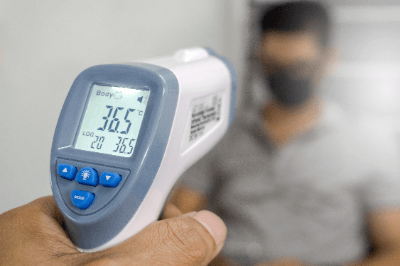 A radiation thermometer is a device that measures temperature by sensing infrared radiation emitted from a material.
A radiation thermometer is a device that measures temperature by sensing infrared radiation emitted from a material.
Since all substances emit infrared rays according to their temperature, this device measures temperature by detecting the amount of infrared rays. Although it cannot measure the temperature inside a material or the temperature of a gas, it can instantly measure temperature without touching the object.
The measurement range (spot diameter) and measuring distance are determined by the device, and the choice depends on the situation.
Uses of Radiation Thermometers
Radiation thermometers can measure temperatures at high speeds and without direct contact. Therefore, they are suitable for temperature measurement of moving or rotating objects or small heat capacity objects whose temperature changes with contact with the sensor.
They are used in a wide range of applications, including industrial processes and research fields.
Radiation thermometers are useful in the following cases:
- When the object is moving
- The object is surrounded by an electromagnetic field
- When the object is in a vacuum or other conditioned air.
Principle of Radiation Thermometer
All matter, including humans, emit infrared radiation. When you put the palm of your hand close to your cheek, you feel warmth because the skin of your hand detects the infrared radiation emitted from your cheek. In general, the higher the temperature of a substance, the greater the amount of infrared radiation emitted.
Radiation thermometers first collect the infrared radiation emitted from a substance onto a sensing element called a thermopile. The thermopile is a sensing element that emits an electrical signal from the absorbed infrared radiation.
In the thermopile, multiple thermocouples are connected in series with the warm junction facing the center, and an infrared absorbing film is placed at the center where the warm junction faces. Light collected by the lens hits only the warm junction, creating a temperature difference between the warm junction and the cold junction on the outside. This creates a voltage difference due to the Seebeck effect and enables temperature measurement.
Infrared radiation is part of the electromagnetic spectrum, and its frequency is between visible light and radio waves. Within this frequency range, only frequencies between 0.7 and 20 microns are used for practical temperature measurements.
Other Information on Radiation Thermometers
1. Radiation Thermometer Accuracy
Radiation thermometers are accurate to within ±1°C for general-purpose products. However, care must be taken to avoid measurement errors if the measurement conditions of the device are not properly followed during actual measurement. The following three conditions determine measurement accuracy.
Measurement Point
The measurement range (or spot diameter) varies according to the distance from the object to be measured. Generally, the measurement range increases when the measurement distance increases. Since the measurement distance and the measurement range vary depending on the type of radiation thermometer, these two conditions should be checked.
Temperature drift
If the ambient temperature of the radiation thermometer is changed abruptly, the measured value may change due to the temperature change. Therefore, keep the ambient temperature from changing abruptly.
Emissivity of the surface to be measured
Radiation thermometers measure temperature by measuring the intensity of infrared radiation emitted from the surface of an object. The intensity of the infrared radiation emitted from the object is determined not only by the temperature of the object, but also by a coefficient called emissivity. Therefore, emissivity correction is necessary when measuring temperature.
2. Measuring Body Temperature With Radiation Thermometer
In recent years, due to increased hygiene awareness, more and more body temperatures are being measured with radiation thermometers. Generally, when measuring body temperature in cases where the external temperature is lower than the body temperature, the body temperature may be displayed lower due to the influence of the outside temperature.
On the other hand, in cases where the outside temperature is high, such as near a heater, a higher temperature may be indicated. When measuring body temperature, check the instruction manual for the radiation thermometer to ensure that the correct external environment is used.
3. About Thermography
Thermography is a non-contact temperature measuring device. Thermography is a device that visually displays the surface temperature of the entire measurement object in different shades of color for easy visualization. Specific examples of its use are shown below.
- Temperature distribution on a person’s body surface
- Temperature distribution due to blood flow in hands and feet
- Detection of abnormal temperatures in machinery
- Tracking animal behavior with a night vision camera
A radiation thermometer is used inside a thermal imaging camera.
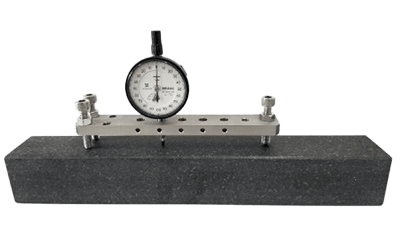
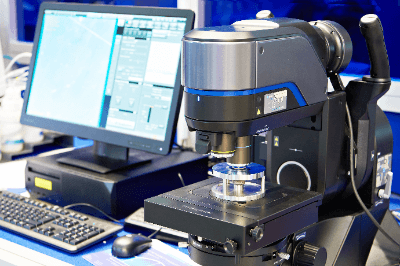 Industrial microscopes are used for process inspection and analysis in the manufacture of semiconductors, electronic components, and liquid crystal
Industrial microscopes are used for process inspection and analysis in the manufacture of semiconductors, electronic components, and liquid crystal 
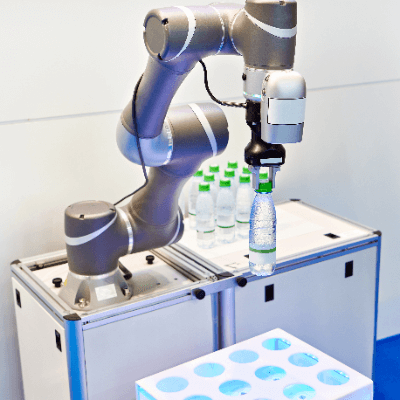 Collaborative robots are robots that allow humans and robots to work in the same work area.
Collaborative robots are robots that allow humans and robots to work in the same work area.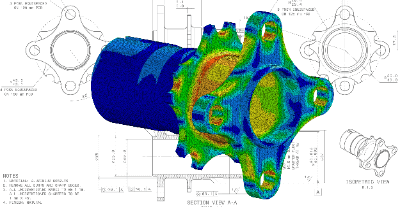 Structural analysis software is a series of processes that calculate the physical quantities that change when loads are applied to the structure under analysis, and evaluate and analyze them based on the obtained calculation results.
Structural analysis software is a series of processes that calculate the physical quantities that change when loads are applied to the structure under analysis, and evaluate and analyze them based on the obtained calculation results.